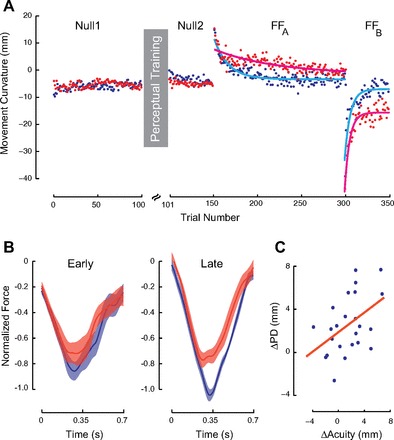Fig. 6.

Somatosensory perceptual training improves the rate and extent of motor learning despite a perceptual boundary shift that serves to decrease error on subsequent movements. A: measures of movement curvature in association with perceptual training that is followed by a rightward force field and then a leftward field. Blue indicates subjects in the perceptual training condition; red shows control subjects. B: mean normalized force profiles over the course of training. Perceptual training results in increases in lateral force production relative to control subjects even when the associated perceptual shift serves to reduce kinematic error. C: increases in acuity with perceptual training are found to be systematically correlated with improvements in motor learning as measured by changes in movement curvature (ΔPD) between baseline and asymptotic performance in the force field. As a measure of acuity we used the distance in millimeters between the 25th and 75th percentile of the psychometric function. The values shown are the changes in distance from the early to the late phase of sensory training. Larger values correspond to greater acuity.
